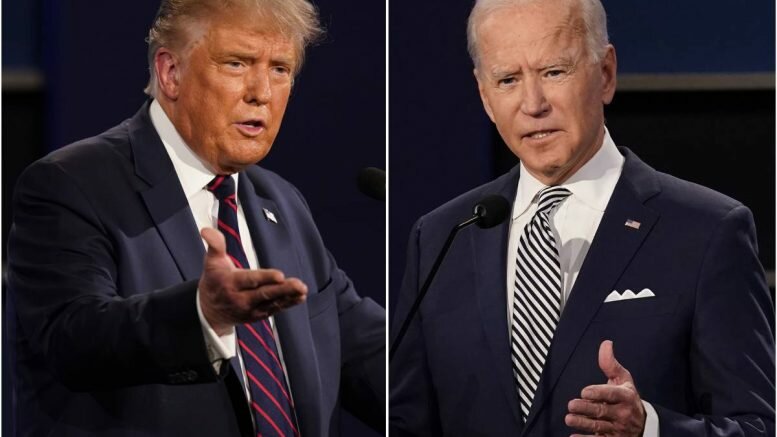The whirlwind 2020 election is in its end stages. Here’s our coverage of results at the time of writing on November 4, 2020.
What’s the current situation?
It’s still anyone’s race between the two major candidates, Joe Biden and Donald Trump.
Joe Biden has received 227 electoral votes out of 538 (50.1%). Donald Trump has received 213 out of 538 (48.2%). There are 98 remaining.
To win, a candidate must receive a total of 270 electoral votes. This means that Biden needs 43 more, and Trump needs 57 more.
As for public votes, around 69,000,000 have been counted for Biden and around 66,300,000 for Trump.
This is how the states currently stand:
For our full explanation of the US voting and election system, head here.
What will determine the winner?
Eight states still haven’t called a winner. Their outcomes will finalize the race for the next President of the United States – but keep in mind that some carry more sway than others.
Here they are, in order of electoral vote number. Percentages of vote counts are given as they stand at the time of writing.
Pennsylvania has 20 electoral votes. As of now, they’ve counted 75% of votes.
Georgia has 16 electoral votes. As of now, they’ve counted 92% of votes.
Michigan has 16 electoral votes. As of now, they’ve counted 86% of votes.
North Carolina has 15 electoral votes. As of now, they’ve counted 95% of votes.
Arizona has 10 electoral votes. As of now, they’ve counted 82% of votes.
Wisconsin has 11 electoral votes. As of now, they’ve counted 97% of votes.
Nevada has 6 electoral votes. As of now, they’ve counted 86% of votes.
Alaska has 3 electoral votes. As of now, they’ve counted 36% of votes.
The winner won’t be called when all remaining states count all their votes, but when one of the candidates receives 270 electoral votes.
Results taking longer this year
In many US elections, there can already be a clear presidential winner the morning after election night November 3. This year, a quick outcome seems less likely.
Voting methods have changed. Amidst the COVID-19 pandemic, more citizens opted to vote via mail from within the US. In previous years, mail-in ballots were utilized in most part by US citizens abroad.
This might prolong the election results because counting the various voting methods could take longer.
Not to mention the possibility of recounts and legal challenges, which are likely given the proximity in results in some states.
So, definitive results might not come in for days.
What candidates are saying
Trump and Biden both gave election night remarks.
Here’s what Trump had to say.
Here’s what Biden had to say.
What Scandinavian commentators are saying about pre-election opinion polls
From here on, the article is sourced from NTB.
Professor Dag Blanck of Sweden’s Uppsala University and chief economist Robert Berqvist of leading Nordic financial services group SEB say that once again, opinion polls have failed, and Donald Trump may be on his way to winning the election.
An average of large polls showed that the day before the election, Biden was just over 8 percentage points above Trump. Betting companies had Biden as their clear favorite.
“You never learn. It was the same in the previous presidential election, in the Brexit vote and the British parliamentary election”, Berqvist says.
“One can say that the opinion polls were quite correct in 2016 regarding votes cast, but what was missed were the almost-even states. There can now be discussion about how reliable these polls actually are”, says professor of North American studies Blanck.
Part of the discrepancies can be correctly explained by deviations within the margin of error. Biden was ahead of Trump in the Florida polls, but it was within the margin of error, and Trump’s victory in the states, therefore, is not particularly surprising.
But methodological problems in recent years have led to uncertainty about getting people to answer when they are called by polling institutes. Fewer and fewer citizens have fixed telephone numbers, and many refuse to answer when an unknown number is calling.
“What happens in the last few days plays a big role when people are insecure. And it seems that Trump has put things in high gear.
“Or, it is the case that those who have been asked in the polls have not wanted to reveal who they are voting for. It is perhaps a small factor of shame that strikes through”, says Bergqvist.
In short, polls may not be the best current indicators of the next US President.
Sources: Norway Today, NTB, New York Times




Leave a comment